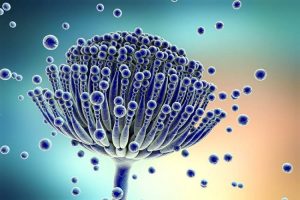Mould and how it affects our health
Have you been told there’s nothing wrong with you, but you know something’s off? It might be mould.
More than 1 in 4 buildings have had enough water damage to grow toxic mould.
If you live in a region of high humidity or near water – rivers, waterways, ocean – your home may be affected by mould.
Damp can affect where you live, work, or spend a lot of time: Mould could be affecting your health and you don’t even know it.

So why does mould affect some people more than others?
This is a question that can be applied to so many aspects of the environmental and lifestyle impacts on our health – whether it be mould, stress, poor diet, lack of sleep, infection, etc.
We are all unique individuals, a blend of our genetic inheritance and lifetime’s experiences and exposures. As such, our bodies respond in a variety of different ways to environmental impacts based on how our life may have impacted on our genetic blueprint.
Environmental factors impacting how our genes work (or not) include:
- Development in utero and childhood
- Internal dialogue/thoughts you think on a daily basis
- What foods you eat
- Environmental chemicals that you are exposed to
- Drugs and medications that you take
- Genetics are like the loaded gun, and the environment is what pulls the trigger. If you maintain a healthy environment , the trigger never gets pulled. Can epigenetic changes be reversed? Perhaps!
Returning to the impact mould can have, we need to consider the gene that affects how our immune system responds to mould: the HLA-DRB1 dubbed the “Mould Gene”.
What Is The HLA-DRB1 Gene?
The HLA-DRB1 gene provides instructions for making a protein that plays an important role in how the immune system functions. The HLA-DRB1 gene is part of a family of genes called the human leukocyte antigen (HLA) complex. The HLA complex helps the immune system distinguish the body’s own proteins from proteins made by foreign invaders such as viruses and bacteria.
In approximately 24% of the population, there is a mutation in this gene that causes even the smallest exposure to a biotoxin to wreak absolute havoc on a person’s immune system. These people may struggle with environmental exposure to mould by developing symptoms very quickly.
What This Means For You:
There are multiple kinds of variations in this gene, and based on which one you have it can express itself in the following ways:
- Mild to extreme susceptibility to becoming sick following mold exposure
- Increased likelihood of contracting Chronic Lyme Disease and/or the inability to recover as well as the possibly of developing Chronic Fatigue from Lyme vaccine Lymerix – which may cause an inflammatory immune response in certain genotypes
- Susceptibility to becoming sick from ingesting Dinoflagellates (fish)
- MARCoNS (A nasty nasal infection/sinusitis)
- Low MSH (Melanocyte-Stimulating hormone)
- Developing Multiple Sclerosis
- Developing Chronic Fatigue
- Contraindications in relation to the Gardasil Vaccine for cervical cancers based on what variation of this gene you have.
If you already have one or more of these conditions, it may be advisable to ask your doctor for the genetic test to find out what is going on inside your body on a cellular level and then take further steps to rid your body of these toxins and boost your immune system.
DNA testing is available through True Medicine, but does not include the Mould Gene – it is only available through your GP.
What next?
Should you carry the Mould Gene, bring your results into clinic so that we can assess the most effective treatment to help support your body in clearing the toxins involved and minimise symptoms developing upon future exposure.
Contact us today to arrange your personalised health assessment and care plan – call 0468 774 633.
Sources:
https://ghr.nlm.nih.gov/gene/HLA-DRB1#conditions
http://www.ncbi.nlm.nih.gov/pubmed/26091874
https://ghr.nlm.nih.gov/gene/HLA-DRB1#conditions
http://www.ncbi.nlm.nih.gov/pubmed/25337799
http://www.ncbi.nlm.nih.gov/pubmed/12762072
http://www.ncbi.nlm.nih.gov/pubmed/6202479
http://www.ncbi.nlm.nih.gov/pubmed/19950279
